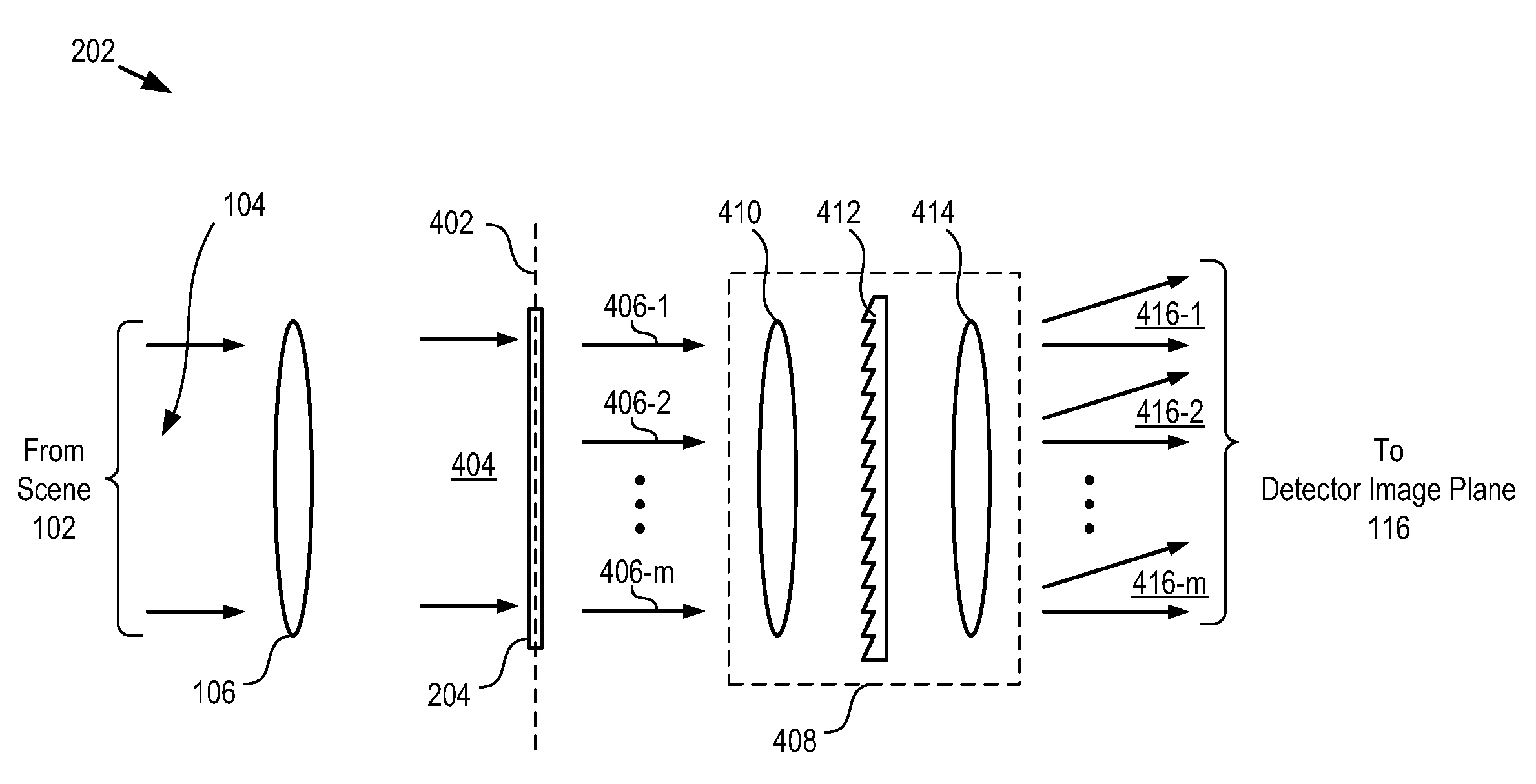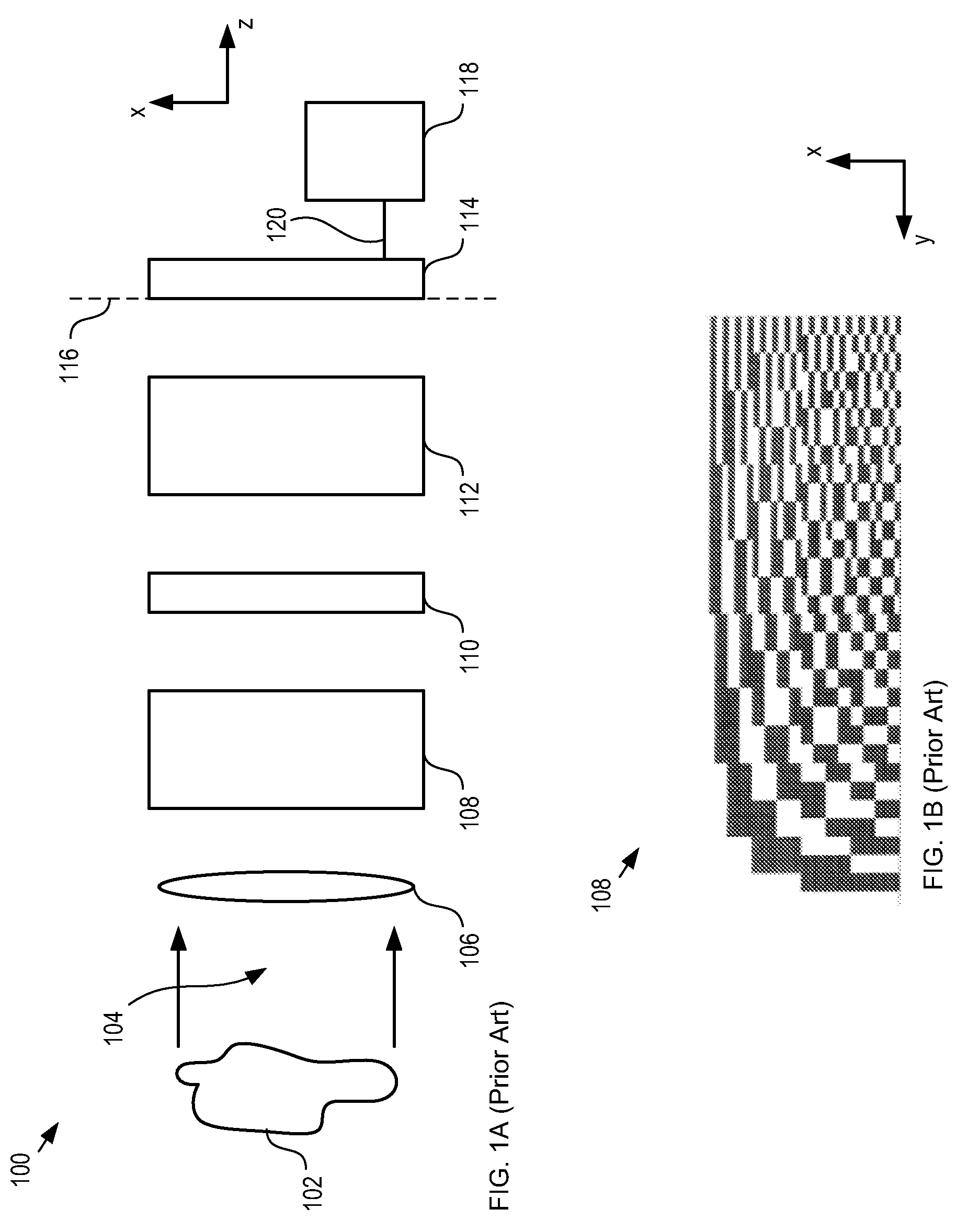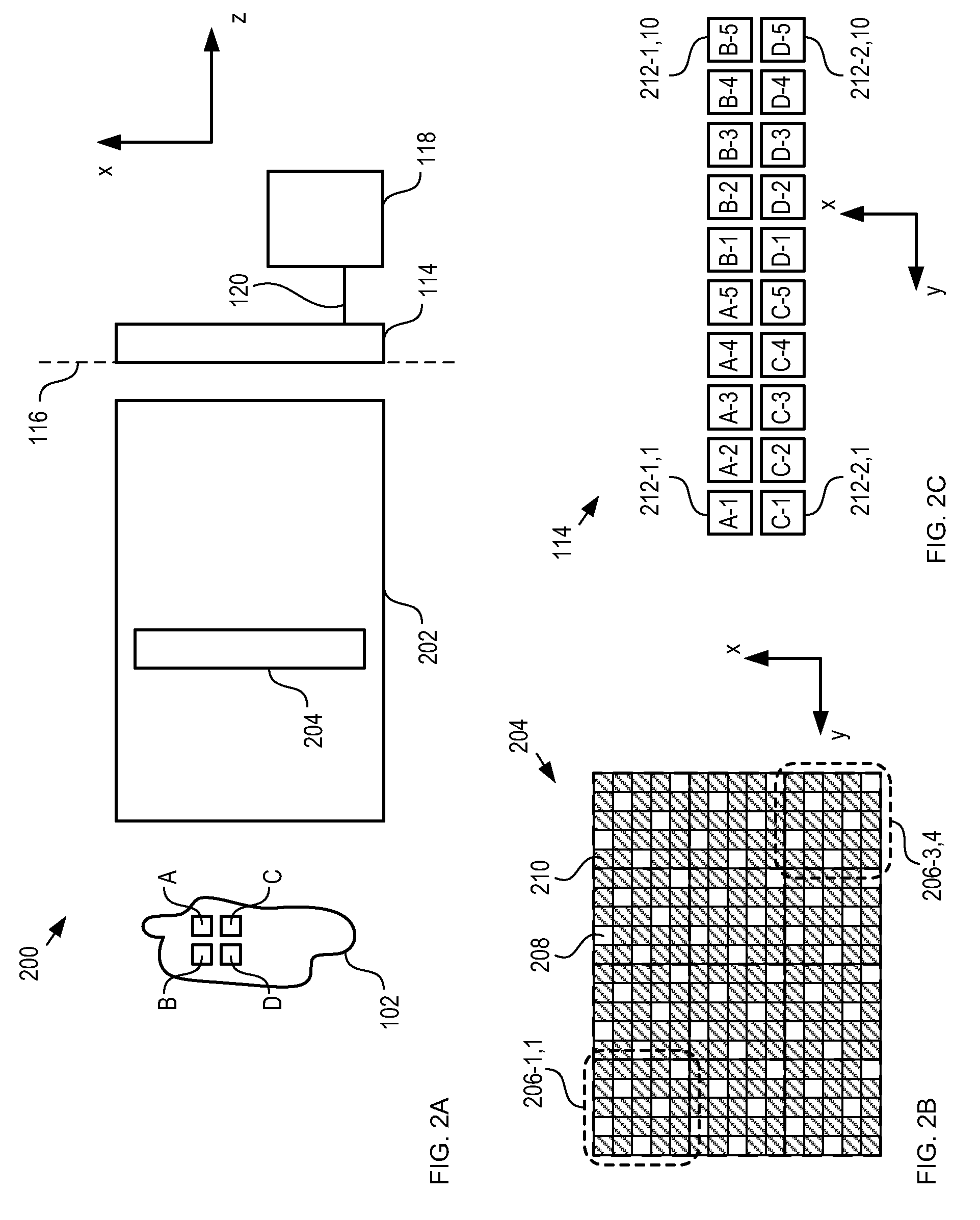Coded aperture snapshot spectral imager and method therefor
a spectral imager and coded aperture technology, applied in the field of spectral imaging, can solve the problems of high light input, poor signal-to-noise ratio, and the inability to particularly apply the imager to imaging non-static scenes
- Summary
- Abstract
- Description
- Claims
- Application Information
AI Technical Summary
Benefits of technology
Problems solved by technology
Method used
Image
Examples
Embodiment Construction
[0033]The following terms are defined for use in this Specification, including the appended claims:[0034]Plurality of spectral components is defined as those spectral components of interest for the development of a datacube. In some cases, light might include additional spectral components beyond those pertinent to the development of the datacube. These additional spectral components are disregarded, vis-à-vis the use of the term “plurality of spectral components.”[0035]Transmissive is defined as substantially transparent for the plurality of spectral components. For example, a transmissive region passes light characterized by any of the plurality of spectral components without significant attenuation.[0036]Non-transmissive is defined as substantially opaque for the plurality of spectral components.
[0037]FIG. 1A depicts a schematic diagram of a portion of a snap-shot spectral imager in accordance with the prior art. Imager 100 comprises lens 106, disperser 108, coded aperture 110, d...
PUM
 Login to View More
Login to View More Abstract
Description
Claims
Application Information
 Login to View More
Login to View More - R&D
- Intellectual Property
- Life Sciences
- Materials
- Tech Scout
- Unparalleled Data Quality
- Higher Quality Content
- 60% Fewer Hallucinations
Browse by: Latest US Patents, China's latest patents, Technical Efficacy Thesaurus, Application Domain, Technology Topic, Popular Technical Reports.
© 2025 PatSnap. All rights reserved.Legal|Privacy policy|Modern Slavery Act Transparency Statement|Sitemap|About US| Contact US: help@patsnap.com



